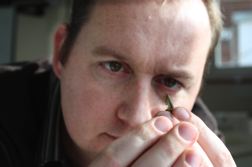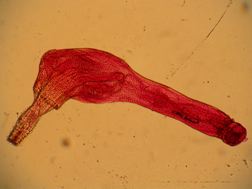
At least 40 million people worldwide have been prescribed Prozac, but how many of them know that they may be sharing their medication with a crowd of shrimp? The poor shrimp aren’t any happier, either: the antidepressant prompts them to swim upward toward the light, which makes them more likely to be eaten by predatory fish or birds.
This news comes to us from the University of Portsmouth in the U.K, where Yasmin Guler and Alex Ford of the Institute of Marine Sciences decided to see what happened if they bathed Echinogammarus marinus shrimp in Prozac. This isn’t such an odd proposition if you consider the fact that the teeny crustaceans live in coastal waters contaminated by pharmaceuticals excreted by humans – including Prozac, also known as fluoxetine.
Says Ford, “Effluent is concentrated in river estuaries and coastal areas, which is where shrimp and other marine life live. This means that the shrimps are taking on the excreted drugs of whole towns.” It seems that between 30 and 90 percent of any pharmaceutical we take is excreted as the active drug, so that the drug itself and its metabolites can enter aquatic water systems.
Prozac is a selective serotonin reuptake inhibitor (SSRI) which means that it causes the neurotransmitter serotonin to build up in synapses, the junctions along nerves through which signals pass. By strange coincidence, a spiny-headed worm called an acanthocephalan infects the shrimps, and these parasites–which lack a mouth or a gut–increase the activity of serotonin in the crustaceans’ brains. (In case you are wondering: yes, shrimps do have brains, or at least a “centralized collection of nerve cells.”)

Acanthocephalans have a complex life cycle in which they live as juveniles in crustaceans and insects, and as adults in the digestive tracts of vertebrates, such as birds, fish and amphibians. Worm-infected shrimp spend more time in the light, higher up in the water – precisely where they more likely to be eaten.
Ford and Guler collected E. marinus shrimp from underneath seaweeds and rocks in Langstone Harbour in Portsmouth and soaked them in seawater infused with fluoxetine, at levels equivalent to those found in sewage treatment plant effluent. They found that the shrimps were five times more likely to swim toward the light instead of away – which in the wild would make them more likely to be eaten by fish or birds.
“Crustaceans are crucial to the food chain,” Ford says. “If shrimps’ natural behavior is being changed because of antidepressant levels in the sea, this could seriously upset the natural balance of the ecosystem.”
Image 1: Courtesy of the University of Portsmouth
Image 2: Courtesy of Dr Neil Campbell, University of Aberdeen, Scotland, UK.
And this heading toward the light is part of acanthocephalan’s survival strategy? Loathsome creatures.
“Nature red in tooth and claw.”